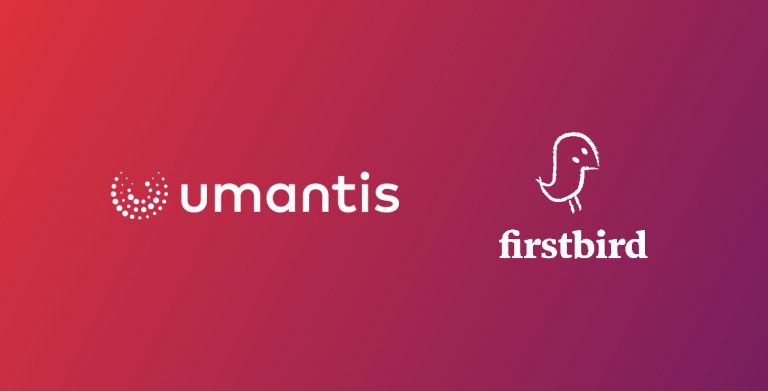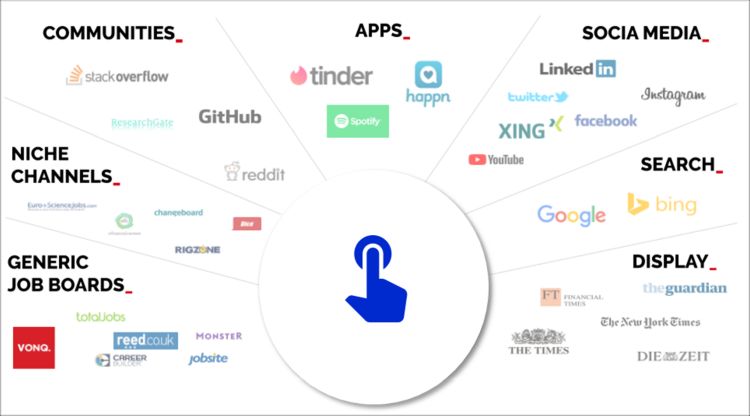Hand on heart: What is the candidate journey like in your company? Can potential candidates simply apply for vacancies with their LinkedIn profile or do they have to register in an application portal first? Can they also apply on the go via their smartphone?
The fact is that the simpler and thus more attractive the application process, the higher the number of high-quality applications. HR managers are dependent on this in times of a shortage of skilled workers.
When it comes to designing attractive candidate journeys, there is still room for improvement in German HR departments. This blog article shows how you can counter the shortage of skilled workers with an attractive candidate journey, reduce early fluctuation and ensure that recruited employees continue to contribute to the company in the long term.
Candidate Journey: Definition
The candidate journey describes the entire application process with all its touchpints that applicants go through when applying for an open position in a company. It is more or less the path until they join the company as employees. The journey begins when applicants start looking for a new challenge and become aware of vacancies in the company. Other touchpints include all interviews during the application process as well as the final decision for or against a new talent. The time after the contract has been signed until the first day of work is also part of the candidate journey. How companies communicate and engage applicants during this time has a significant impact on candidates' perceptions.
Candidate Journey vs Candidate Experience
The experiences that candidates gain during the candidate journey define the candidate experience. So, it encompasses all the perceptions that candidates make during the application process. This means that the appearance of a company's career website also influences the candidate experience and determines whether candidates apply at all. How the job interviews are structured and how the communication takes place afterwards also influences the new talents. If the candidates only gain positive experiences during the candidate journey, there is a high probability that they will start the new job motivated and convinced. A good candidate experience also has a positive effect on the employer's image. The design of the candidate journey and the employer branding strategy should therefore always go hand in hand.
Candidate Experience Enhances Employer Branding
The design of an attractive candidate journey should always be understood as part of the overarching employer branding strategy. Why? Because candidates report on their experiences in the application process and thus significantly define the image of the employer brand, for example on career platforms such as Glassdoor or Kununu. For a large number of applicants, those companies that are negatively reported on these portals are not even considered as employers. Reason enough to get to grips with the design of an attractive candidate journey. After all, a positive perception of the employer brand leads to more talents applying. This, in turn, accommodates HR managers in times of a shortage of skilled workers and secures companies competitive advantages.
Candidate Experience Management
With good candidate experience management, HR managers ensure the quality of the candidate journey in the company. Candidate experience management is based on customer experience management from marketing. As with customer experience management, candidate experience management is about looking at the experiences and impressions of customers, in this case the candidates, during the purchase or application process and deriving optimizations for an even better experience. In order to anchor candidate experience in personnel marketing, you need a dedicated person who can significantly drive the topic forward.
The most important prerequisite is the definition of central KPIs. For example, the "early turnover rate", "offer acceptance rate" and "quality of hire" are suitable for this purpose. Combined with candidate feedback, hiring managers can measure the quality of their candidate journey and improve it based on the insights gathered. So far so good. But in practice, not all recruiters use their candidates' feedback to improve their application process. It contains valuable information on the quality of the candidate journey. If, for example, many applicants report back that they have withdrawn their applications due to too long a response time, measures to shorten the response time can already result in significant improvements in the quality of the candidate journey.
The 5 Phases of the Candidate Journey
The candidate journey can be divided into five phases: "Attract", "Connect", "Engage", "Convert" and "Grow". While the first four phases cover the time until the contract is signed, the last phase already transitions into onboarding and thus into the employee journey.

Attract
The first phase of the candidate journey is all about attracting the attention of potential candidates. This is achieved by means of a well-thought-out employer branding strategy that positions the company as an attractive employer on the market, for example through a detailed company profile on Kununu and Glassdoor, regular sponsorship activities, an attractive career website and appearances at career fairs.
Now put yourself in the candidates' shoes. You are looking for a new challenge in your profession and want to develop further. You will receive new incentives either from your circle of friends and acquaintances via recommendations or via low-threshold career sites such as LinkedIn or Xing. There you will find an interesting job posting. What are you doing? They deal with the company as an employer and do research on Kununu and Glassdoor, for example. Unfortunately, there are few reviews and these are rather average. You decide to keep looking and not apply. As a company, you have generated attention here, but have not been able to convince the applicants to enter the next phase "Connect".
Connect
In the second phase, "Connect", contact is made between applicants and companies. This can be done, for example, via a talent pool, asking the responsible recruiter or an initial interview at a career fair. If applicants are convinced of the job advertisement and the company, they decide to apply. But even here there are stumbling blocks.
Imagine the following scenario: After extensive research on the employer, you click on "apply" in the LinkedIn job advertisement and are redirected to the company's career page. There you will be asked to create a profile and upload all your documents such as your CV and cover letter in PDF form. In addition, you will have to transfer all data manually again, as not all data from your CV has been transferred correctly. Sounds awkward? And it is. And in case of doubt, it leads to applicants abandoning the process and not applying in the first place. However, if the applicant interface is attractive and intuitively designed, does not take too much time and is responsive on top of that, qualified candidates are more likely to apply.
Engage
When applicants submit their application, communication with the company begins. The "engage" phase begins. During this phase, close and transparent communication with applicants is particularly crucial. For example, if the invitation email to the interview is formulated in a friendly way, the applicants will have a positive feeling right from the start. The way the reception is designed on site also influences the candidate experience. Ultimately, this phase is about giving applicants a professional image of the employer – regardless of whether they are ultimately selected for the position or not. Don't forget: during this phase, candidates will come into direct contact with the company culture for the first time and will automatically compare it with the pre-created image.
Convert
In the fourth phase, "Convert", the final decision is made – for both employees and employers. If you, as an HR manager, decide for or against diverse applicants, the way you do this influences the candidate experience. If, for example, you have built up a close bond with the new talent throughout the application process and communicated regularly, the likelihood of an acceptance from the applicant increases. When it comes to the final signing of the contract, you can pat yourself on the back. But by no means should you consider the candidate experience to be over at this point. Now it's time to maintain the positive candidate experience you were able to convey during the application process and let it transition into professional preboarding.
Grow
Strictly speaking, the last phase may no longer be completely part of the candidate journey. But it is precisely onboarding, which ideally begins before the first day of work (also called preboarding), that still significantly defines the candidate experience as a preliminary stage to the employee experience. Therefore, after signing the contract, make sure that communication with the new talent does not break off. For example, use digital tools such as the Umantis Onboarding App to bind new employees to the company at an early stage and eliminate any questions they may have. How this can be achieved is explained, for example, in the onboarding process.
Excursus: Candidate Journey Map
A candidate journey map graphically represents the applicants' journey. With the help of candidate journey mapping, HR managers can clearly outline the individual phases of the candidate journey and graphically work out at which touchpoints there is still room for improvement. If, for example, a particularly large number of applicants drop out during the application process and do not even send their application, it is worth taking a closer look at the application portal. If new employees quit before their first day of work, communication during the candidate journey may not have been optimal.
Candidate journey as the cornerstone of the employee experience
The experiences of new employees during the candidate journey have a direct impact on the onboarding journey. How they perceive them, in turn, has a direct impact on the employee experience and defines how motivated and sustainable new employees are to contribute to the company. An attractive candidate journey therefore lays the foundation for a positive employee experience – a goal that companies should not lose sight of, especially in times of a shortage of skilled workers, if they want to benefit from the qualities of their employees in the long term.
Would you like to improve the candidate journey in your company? Find out now how you can not only professionalize the application process with Umantis Applicant Management , but also leave a lasting good impression on your applicants.
Get in touch now.
1Haufe Recruiting Study 2021
2HCI, 2018, "Statistics: Rethink Your Candidate Experience or Ruin Your Brand". https://www.hci.org/blog/statistics-rethink-your-candidate-experience-or-ruin-your-brand.
3Haufe Recruiting Study 2022




